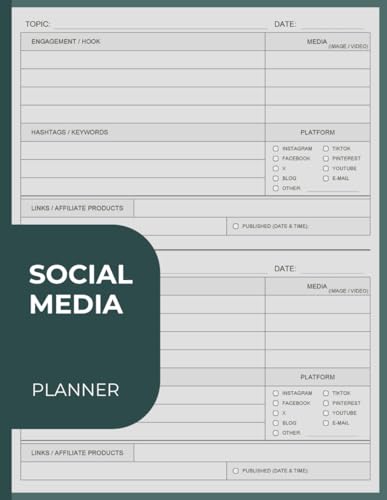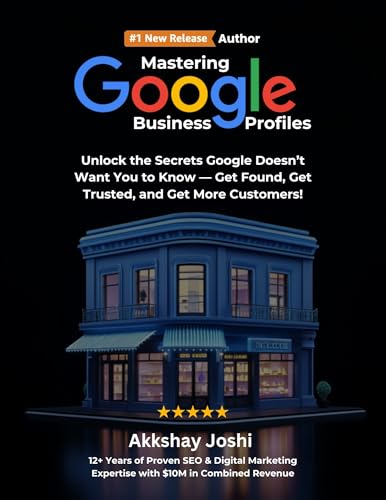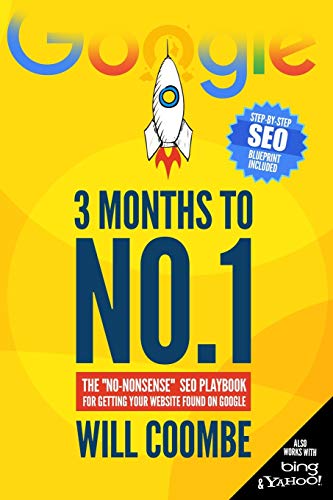
Attracting potential customers is key for any business to grow. By using strong client acquisition strategies, you can grab your audience’s interest. This article delves into ways to draw in and involve those who might buy from you. These steps are crucial for expanding your business.
Strong customer acquisition strategies build the ground for business victory. With smart planning and implementation, you can attract quality leads. These leads can then become loyal customers. Starting from identifying your market to using different marketing tools. This piece will map out a plan to capture clients and push your business ahead.
Being skillful at lead generation and sales prospecting is key for growing your business. No matter if you’re just starting out or have experience. Using these strategies can help you grow a solid customer base and reach your business targets.
Define Your Target Audience
Starting an effective marketing strategy means knowing your audience well. It’s key to understand their age, interests, and shopping habits. This helps you craft messages and designs that truly connect with them.
Demographics Data
Demographics cover basic details like age, where people live, and their jobs. You learn more about your customers’ real needs and likes. You can get this info through surveys, talking to customers, and studying what’s happening in your field.
Psychographics Data
Psychographics dive into what people care about, what they want, and what’s tough for them. Knowing this, you can make ads and offers that speak to their hearts. This helps your brand really stand out to them.
Behavioral Data
Behavioral data shows how people actually interact with your brand. What they buy and how they use your website are some examples. Studying this helps you see when and where to promote your products to them.
Looking into demographics, psychographics, and behaviors leads to building customer personas and buyer personas. This deep knowledge lets you make marketing campaigns that people care about. By doing this, you’re more likely to turn their interest into sales.
Create a Plan to Generate Demand
Creating a solid demand generation plan is key to finding new customers and growing your business. It involves setting clear goals, picking the strongest marketing methods, and making content that catches the eye of your audience.
Setting Goals
First, define marketing goals that match your business aims. These might be about making your brand known, getting a certain number of leads, or upping traffic on your site. Make sure these goals are SMART: specific, measurable, achievable, relevant, and time-bound.
Identifying Effective Marketing Channels
Next, look at different ways to get your message to your audience. This can mean using methods like cold calling, email marketing, SEO, social media, or attending events. Check each method’s pros and cons. Then, put more effort into the ones that work best for you.
Crafting Compelling Content
Create a strategy for your content that shows off your skills and what sets your products apart. This might include making useful blog posts, detailed whitepapers, or interesting videos. Focus on what your audience needs and show how your products can help them.
Distributing Content Effectively
After you make your content, get it out to your audience. This may mean posting on certain websites, using social media, or reaching out through email. Keep an eye on how well your content is doing. Adjust your strategy regularly for better results.
By using these steps, you can create a strong demand generation strategy. It will not only bring in new clients but also keep them coming back.
Build and Motivate a Competent Sales/Marketing Team
It’s essential to have a strong sales and marketing team to win over clients. You should hire people who know their job well and have the needed experience. This way, you make sure your audience is understood and reached effectively. Training them well is key, so they know your products and what sets your brand apart.
It’s vital to pay your team well and fairly to keep them motivated. A good pay shows you value their work. Also, creating a positive work environment helps keep your team happy and focused.
Want to build successful sales and marketing teams? Here are some tips:
- Look for people who have done well and know your customer market.
- Train your team thoroughly so they understand what you offer and where your company stands.
- Set up a pay system that includes good salaries, bonuses, and other perks.
- Create an environment that’s all about working together, talking openly, and always getting better.
By having a great sales and marketing team, you can really attract the clients you want. This helps your business grow.
Encourage Referrals and Incentives
In the business world, referral marketing is key. It is three to five times more effective than other marketing. Happy customers spread the word to their friends and family.
Encouraging customer referrals means offering rewards. You can give discounts or special rewards for successful referrals. This increases customer loyalty and brings in new customers.
Great customer service is essential too. When customers feel good about your company, they’re happy to recommend you. Having a strong service culture is crucial for your advertising by word of mouth to work well.
- Set up referral marketing plans with rewards for customers who refer friends.
- Focus on providing top-notch customer service to make customers want to recommend you.
- Always ask for feedback to improve and keep customers happy and loyal.
Use the power of customer referrals and rewards for growth. By using these methods, you can build a loyal client base and grow your business.
Engage in Networking and Industry Events
Getting involved in industry events and growing your network can help win over new clients. It lets you make important contacts, boosts your brand’s presence, and shows you’re a leader in your area.
Head to industry conferences, trade shows, and seminars to meet possible clients and learn from leaders. You can also share your wisdom by speaking, being on panels, or leading sessions. This helps make you a trusted figure in your field.
- Join networking organizations that match your audience or area. Be active in these groups, show up at their events, and take on key roles. This makes you more visible and deepens your relationships.
- Use social media platforms like LinkedIn to connect with industry folks, find useful groups, and have meaningful chats. Your online activity can back up your in-person networking and keep you remembered by peers.
- Look for chances to speak at conferences or host workshops. These talks not only show you’re an expert but also help you connect with more folks and attract potential clients.
By staying involved in networking and industry events regularly, you can grow a strong professional network. Plus, you can become known as a key thinker in your field. This can catch the eye of clients looking for what you offer.
Offer Introductory Discounts and Trials

Getting people to choose your business is tough. But, using discounts and trials makes it easy for new customers to give your products a chance without a big risk. These offers help build trust, spark interest, and keep first-time customers coming back. They’re a smart way to grow your customer base.
Free Trials
Offering a free trial is a great way to attract new customers. Free trials let people see what your product can do without them having to pay upfront. This is ideal for those who are unsure about trying something new. It lets them see the benefits without spending money yet.
Product Demos
Giving product demos is also a powerful technique. It lets potential customers see your product in action. This shows them how your products work and what benefits they offer. It also helps to clear any doubts they might have. A good demo can make people excited, leading to more sales through special offers and discounts.
Keep an eye on who takes up your deals and trials. Target these customers with specific ads or messages tailored just for them. This personal approach can turn them into loyal, returning customers.
| Introductory Offer | Potential Benefits |
|---|---|
| Free Trials | Allows potential clients to experience your products or services risk-free, building trust and encouraging further engagement. |
| Product Demos | Showcases the features and benefits of your offerings, addressing concerns and generating excitement among potential clients. |
| Discounts | Provides a financial incentive for new clients to try your products or services, lowering the barrier to entry and increasing the likelihood of conversions. |
Partner with Complementary Businesses
Forming business partnerships and co-marketing alliances can greatly help you grow. When you work with non-competing businesses that share your target customers, you both win. You get to use each other’s skills, resources, and contacts for mutual benefit.
One great way is to look for brands or services that complement yours. Then, you can work together on events, workshops, or marketing efforts. This lets you reach new people and add more value to what you offer.
Brands with big growth potential often join forces with others in complementary fields. These alliances help them get seen more, get recommended more, and they usually find more potential clients as a result.
| Benefits of Business Partnerships | Strategies for Effective Collaboration |
|---|---|
| Expanded reach and visibility Access to new customer segments Pooled resources and expertise Increased credibility and trust Opportunities for cross-promotion | Identify complementary businesses with a similar customer base Collaborate on co-marketing campaigns, events, or workshops Leverage each other’s communication channels and networks Offer value-added services or bundled products Continuously evaluate and refine the partnership |
Focusing on business partnerships with the right companies can open up new customer avenues. It can also position your brand as an industry leader. The goal is to find businesses that complement yours, helping you target your audience better.
Promote Expertise on LinkedIn
Today, it’s smart to use LinkedIn to show you’re an expert in your field. By being active, you can share what you know. This helps you find new clients or people to work with.
LinkedIn Posts
Posting often on LinkedIn can show your skills well. Talk about what’s new in your field or give advice. Make sure your posts look good, are easy to read, and speak to the people you want to reach.
LinkedIn Groups
Being part of the right LinkedIn groups helps a lot too. It can grow your connections and show your smarts to a focused group. Join and share your insights in groups that match your expertise.
LinkedIn can help you stand out and find new people to work with. Being active on it can really improve your career and business chances.
Allow Audience to Experience Your Product

One top way to get more clients is to let them try your product first. This shows them what your product can do and makes them more likely to buy it. It’s like a sneak peek into what they could have.
By letting people try your product or see a demo, they can imagine using it in their own work. This makes them feel the value your product adds. It improves how they see the experience of using your product too.
Free Trials
Free trials help put your product in your customer’s hands without any risk. They can check out the features, see if it fits their needs, and then decide. This makes it easier for potential clients to see if your product is right for them.
Product Demos
Product demos are another great way for your audience to learn about your product. They’re like a show-and-tell of your product’s best aspects. It shows how your product can make their work easier. Demos help your audience understand your product’s benefits better.
Using these strategies can make your audience really get what your product offers. It can turn interested people into loyal customers.
Embrace Adaptability and Change
Today, being able to adapt is key to business success. Companies that change and make their products better attract more customers. This requires getting feedback from customers and doing market research often.
Seek Customer Feedback
Understanding what your customers need is vital. Talk to them through surveys, focus groups, or chats. The info you get helps make your products better, keeping you up to date with what your customers want.
Conduct Market Research
Knowing about trends, new tech, and what customers want is crucial. Do thorough market research to find chances to grow and adapt. Look at what the industry is doing, your competitors, and how consumers behave. This will help you make smart choices.
Adapting and listening to feedback lets businesses thrive in the long run. It shows you’re dedicated to offering the best to your customers, adjusting to their changing needs.
Strategies to Capture Clients
Effectively capturing clients is key for any business to succeed. Let’s look into several tried and true strategies. These include customer acquisition strategies, lead generation tactics, and sales prospecting techniques. The goal is to grow your customer base and do well in a tough market.
Firstly, start by defining your target audience. Look at who might buy your product or service closely. Think about their age, interests, and habits. This helps your marketing be more effective.
Then, create a plan to generate demand. Define what success looks like for you. Pick the best ways to reach your audience. Making your content interesting and putting it out there right can spark curiosity in your product or service.
It’s also important to have a team that’s good at selling and marketing. Train and support them well. An effective team can bring in and keep customers better.
Don’t forget to use your current customers to help find new ones. Happy customers are a great source of new business. Offering a benefit for sending new customers your way is a smart move.
Networking and going to industry events can help you meet new clients. Showing off your skills and connecting with others in your business can lead to new opportunities.
Think about starting with introductory discounts and trials. Letting people try your product or service at a lower cost can win them over. Free samples and demos can make a big difference to someone deciding.
Working with businesses that offer something related but different can help you reach more clients. You can help each other by sharing information or sending customers your partner’s way.
Finally, it’s smart to promote your expertise on platforms like LinkedIn. Share your knowledge through articles, join discussions in your field, and build trust. This can lead to more people seeking your help or product.
By using these customer acquisition strategies, lead generation tactics, and sales prospecting techniques, you can help your business grow. Always be ready to learn and adjust to what your customers need. Being flexible is important to keep up and do well.
Conclusion
To get more clients and expand your business, you need a detailed plan. Start by knowing who your target audience is. Then, create interest in what you offer.
Be sure to choose the right people for your sales and marketing team. Also, don’t forget the power of referrals and partnerships. They can help you reach more customers.
It’s important to be ready for changes in the market. Listen to your customers to understand their needs better. Offering introductory discounts can draw people in too.
By using all these steps, you can grow your business steadily. Keep being adaptable and focused on what your customers want. This is the way to stand out and keep them coming back.
FAQ
How can I define my target audience effectively?
To nail down your target audience, gather info on who they are and what they like. This includes their age, gender, job, and so on. Knowing what they fear, dream of, and need is crucial too.
What are the key steps to create a demand generation plan?
Starting a plan means first setting goals and choosing the best ways to market, like through emails or events. Then you make content, like blogs, to show off your product. Finally, get this content out there on the right sites and using social media or emails.
How can I build and motivate a competent sales and marketing team?
Hiring the right people is key. They should know and be able to reach your target audience. Make sure they understand what makes your product special right from the start. Offer good pay to hold onto top talent.
What strategies can I use to encourage referrals and incentives?
Giving existing customers rewards or shout-outs when they send folks your way can really work. Be top-notch in customer service to get them talking positively. Happy customers often pull in new ones for you.
How can I engage in networking and industry events effectively?
Joining events and meetings in your field can really help. You get to show everyone how good you are at what you do. Plus, you can give talks or hold sessions to stand out. This way you make friends in the industry and more people know about you.
What types of introductory discounts and trials can I offer to attract potential customers?
Letting people try your product for free or at a discount is a great way to get them interested. Let them see what your product can do for them. And then, let them know about more of your products with targeted ads.
How can I partner with complementary businesses to capture new clients?
By teaming up with others who sell something similar but not the same, you can reach more people. Work together on projects or events to attract each other’s fans. This way, everyone gets more value and visibility.
What strategies can I use to promote my expertise on LinkedIn?
Use LinkedIn to share what you know with others. Post about industry news or your own insights. Talk to people in groups there. This all helps you get noticed and connects you with people who might want to work with you.
How can I allow potential customers to experience my product?
Letting people try your product for free or see it in action can turn them into customers. It shows them how you can make their lives better. And they get to see the good things your product can do for them.
How can I embrace adaptability and change to attract potential customers?
Listening to your existing customers is crucial in keeping up with what’s new and needed. Regularly studying the market helps find ways to grow. Being ready to make changes for the better can attract those looking for what’s fresh and innovative.














![NEEWER 55W 18"/45cm Ring Light Kit [New Version], 5600K Dimmable ...](https://m.media-amazon.com/images/I/414QLqvZWLL._AC_.jpg)








